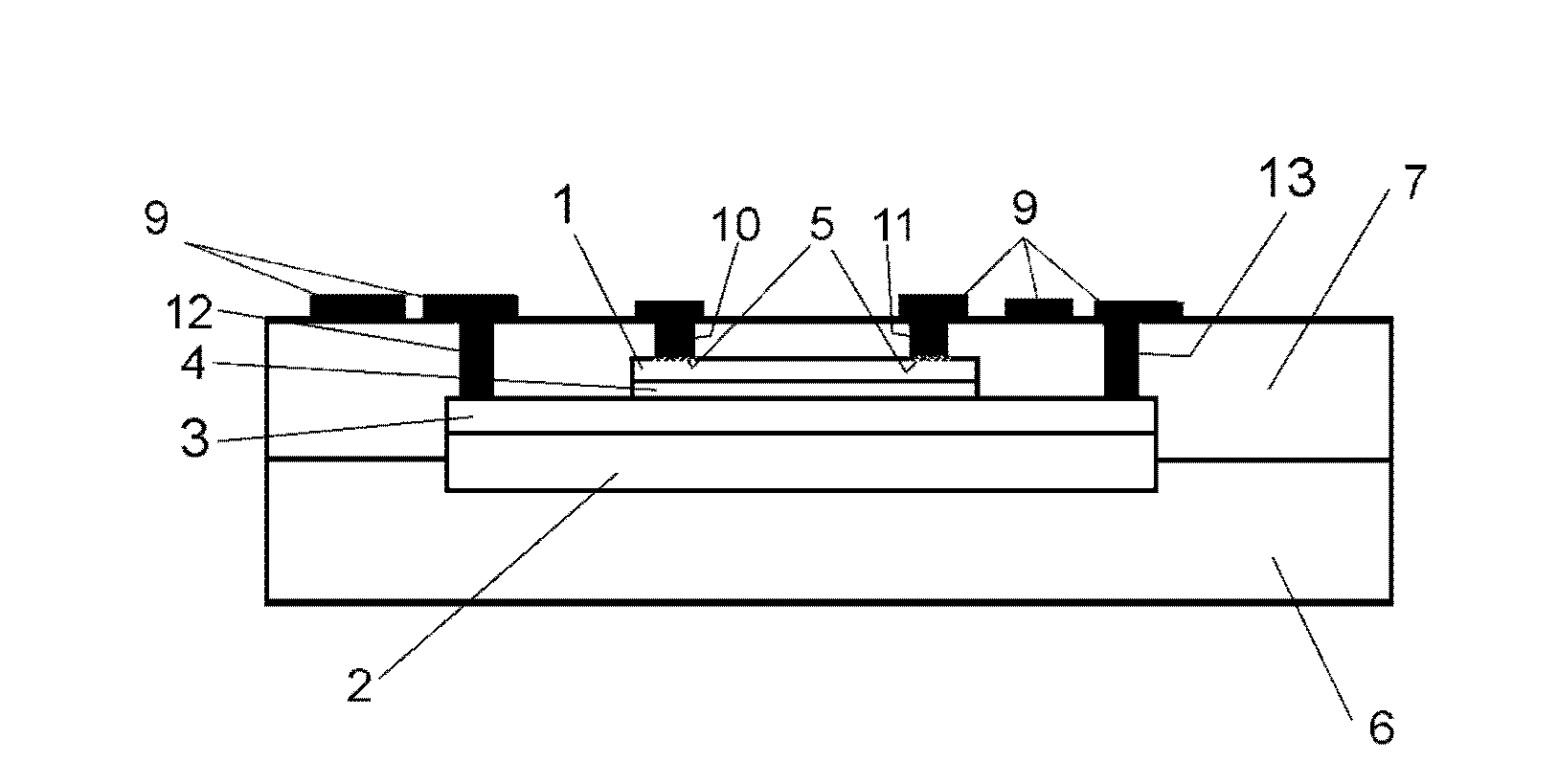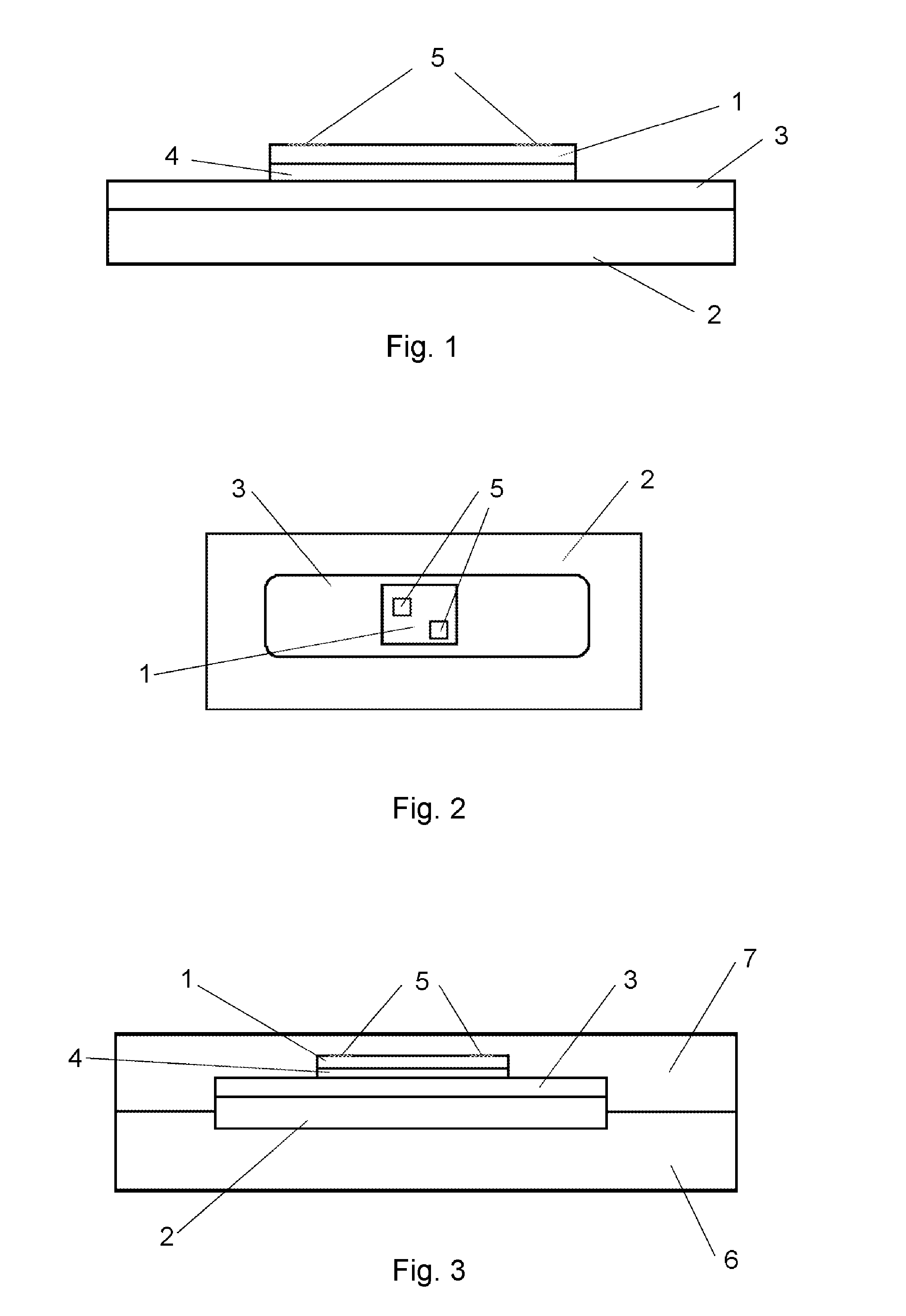Electronic device and method of manufacturing an electronic device
a manufacturing method and electronic technology, applied in the field of electronic devices, can solve problems such as inconvenience in the process, antenna production, and the need for several steps in the antenna production process
- Summary
- Abstract
- Description
- Claims
- Application Information
AI Technical Summary
Benefits of technology
Problems solved by technology
Method used
Image
Examples
Embodiment Construction
[0052]In FIG. 1, an IC 1, by interposition of an isolating layer 4, is in a first process step placed on a first conductive structure, which in this case is a conductive layer 3 arranged on a carrier 2, such as a polymer carrier. The isolating layer 4 also functions as an adhesive for firmly holding the IC 1 on the conductive layer 3. From a process point of view the handling of the IC 1 being fixed onto the carrier 2 is much easier than a direct pick and place process and can be easily integrated into an antenna production and lamination environment. This first process step is similar to IC packaging for an interposer, but without the need of a metal interconnection between the IC and the conductive parts of the carrier and much relaxed positioning tolerances. In the top view according to FIG. 2 it can be seen that the conductive layer 3 can be patterned in a way to optimize the following process steps. In particular it will be realized that the exact positioning of the IC 1 on the...
PUM
| Property | Measurement | Unit |
|---|---|---|
| thickness | aaaaa | aaaaa |
| thickness | aaaaa | aaaaa |
| conductive | aaaaa | aaaaa |
Abstract
Description
Claims
Application Information
 Login to View More
Login to View More - R&D
- Intellectual Property
- Life Sciences
- Materials
- Tech Scout
- Unparalleled Data Quality
- Higher Quality Content
- 60% Fewer Hallucinations
Browse by: Latest US Patents, China's latest patents, Technical Efficacy Thesaurus, Application Domain, Technology Topic, Popular Technical Reports.
© 2025 PatSnap. All rights reserved.Legal|Privacy policy|Modern Slavery Act Transparency Statement|Sitemap|About US| Contact US: help@patsnap.com



